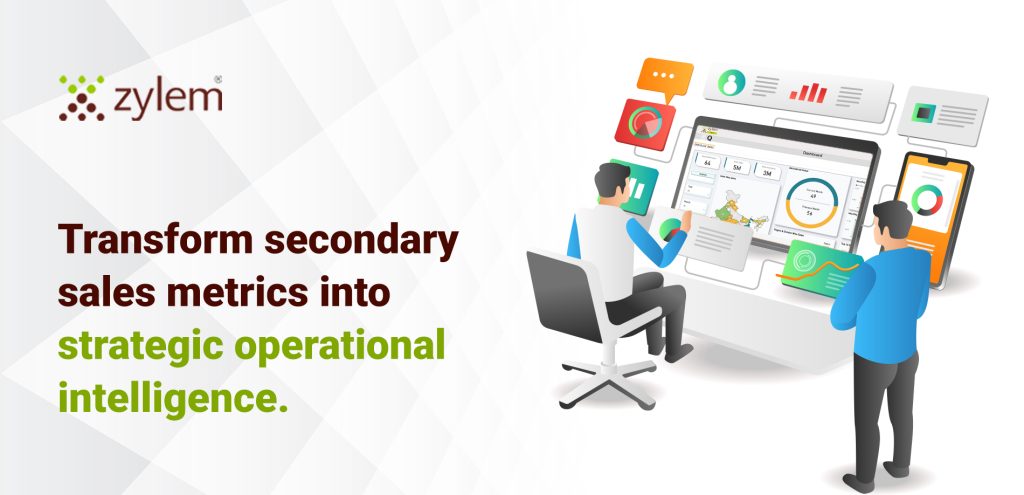Every finished product embarks on a journey the moment it leaves the factory gate. After the first transfer—the primary sale—the item passes through layers of wholesalers, distributors, and retailers before finally reaching the customer. Across that winding path, critical information is generated: how fast each SKU sells in different regions, which partners push volume consistently, and where stock idles on the shelf. Yet many companies still operate with only a partial view of these downstream movements.
The blind spot is costly. Decision Makers may inaccurately forecast demand, leading to the production of an incorrect product mix. As a result, inventory ties up working capital, and finance teams scramble to reconcile spreadsheets at month-end. Zylem is built to close this gap. Its patented workflow captures invoice-level data directly from distributors, cleans and standardises every record, and delivers a single version of the truth through intuitive dashboards. Following the granting of patents in India, the United States, and South Africa, the platform now offers organisations worldwide a consistent method to turn scattered transactions into business clarity.
Persistent Pain Points Holding Back Growth
- Data Arrives in Variety of Formats & Structure: Each distributor operates a billing system of its own choosing. One sends CSV files, another prefers XML, and a third exports PDFs. Item codes are often shortened, tax fields look different, and date formats vary by country. Analysts spend days matching columns before any accurate insight emerges.
- Sell-Out Figures Come Too Late: Downstream sales often arrive in a weekly or monthly bundle—typically after key replenishment decisions are made. As a result Decision makers must estimate the regional demand, resulting in overstock in one area and out-of-stock in another.
- Month-End Close Is Slower Than It Should Be: Finance teams must reconcile revenue and rebate claims with missing or mismatched invoices. Audit requests take hours to satisfy, and close cycles stretch longer than management likes.
Zylem’s Patented Approach—Explained in Simple Steps
- Convenient Remote Installation: Zylem provide convenient remote installation. It seamlessly adapts specified business requirements, providing hassle-free integration without disrupting Distributors existing processes.
- Automated Cleansing and Validation: Duplicate lines are removed, field formats are aligned, currencies are normalised, and SKUs are mapped to a master list.
- Standardisation and Integration: All records share common product codes, customer identifiers, and tax treatments, enabling fair comparisons across regions.
- Centralised Dashboards and Reports: Clean data flows into Zylem’s cloud portal, where sales, supply-chain, and finance teams view the same up-to-date indicators—true secondary sales visibility.
Tangible Business Impact
Inventory in the Right Place at the Right Time
When live sell-out numbers show exactly how quickly each SKU moves, inventory managers balance stock more accurately. Excess inventory falls, shelf-outs decline, and working capital is freed for other priorities.
Sharper Production Plans
True demand signals help production teams ramp up or scale back lines before swings turn into schedule interruptions. The factory runs steadier, and rush shipping costs decline.
Faster, Cleaner Month-End Close
With invoice-linked revenue figures arriving in a unified format, finance teams shorten close cycles. Auditors receive source documents in minutes, not days, and rebate validations rely on system data rather than email threads.
Operational Advantages for IT and Business Teams
- Remote Deployment: Due to remote installation, local IT teams avoid heavy on-premise projects.
- Scalability: New distributors or product lines can be added quickly; the cleansing rules engine adapts without extensive re-coding.
- Role-Based Access: Sales managers see their territories, supply-chain managers view global aggregates, and finance retains full audit trails—all within one secure portal.
- Scheduled Email Reports: Executives can receive updates daily, weekly and monthly according the requirement. freeing analysts from manual compilations.
Measuring Return on Investment
Organisations that automate secondary-sales with Zylem typically track three headline improvements:
- Stock-Turn Increase: Leaner inventory, balanced by region and SKU, reduces carrying costs.
- Labour Hours Saved: Analysts focus on insights rather than file clean-up, cutting manual reconciliation time.
- Lower Write-Offs: Early warnings on slow-moving stock help redirect goods before expiry or markdown.
These gains often offset the investment within the first planning cycle, and the benefits compound as more distributors connect to the platform.
Implementation in Weeks, Not Quarters
A common worry is that any solution touching distributor systems will demand long IT hours … After basic credentials and field mappings are confirmed. Training focuses pre-built widgets—no complex BI design sessions required. additional distributors and SKUs are added using the same template, preserving consistency.
Looking Ahead
Supply chains will keep evolving—new channel partners, direct-to-consumer models, and rising customer expectations guarantee as much. Yet the need remains the same: a clear, reliable picture of what sells, where, and how quickly. Zylem provides that picture through patented secondary sales analysis. By converting fragmented downstream transactions into a shared source of truth, the platform helps businesses respond sooner, allocate resources better, and grow partnerships on solid, data-driven ground.
To see how Zylem delivers secondary-sales insight with patented data extraction software, visit our secondary sales management software page, or request a demonstration tailored to your own data landscape.
FAQs
Secondary sales tracks product movement from distributors to retailers and customers. This visibility reveals real demand patterns, helping you optimize inventory and make accurate production decisions based on actual market consumption.






